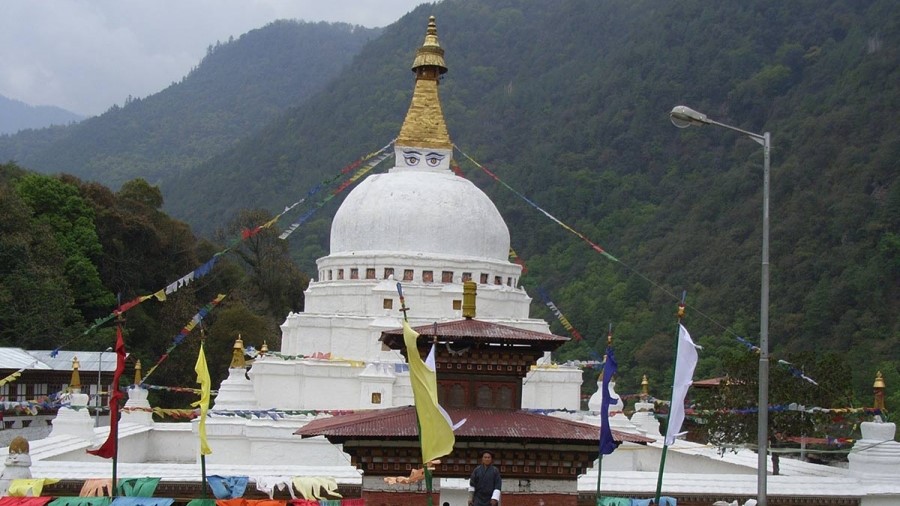Gom Kora is a small Lhakhang in the north of Trashigang about 21 km away. It is also a gateway to Trashiyangtsi. Before it got its name as Gom Kora it was called as Gomphu Kora, Gomphu meaning ‘a sacred meditation site of Guru Rinpochhe’ and Kora meaning ‘Circumambulation’. Today Gom Kora Tsechu is not only famous as festival but also one of the pilgrimage places for eastern Bhutanese and some part of India, it is also famous among young people for meeting their true friends.
The story of Gomphu Kora goes back to the 8th century AD. Legend has it that an evil spirit named Myongkhapa escaped from Samye in Tibet when Guru Padmasambhava, the progenitor of the Nyingma strand of Buddhism, was spreading the Dharma in the Himalayas. Myongkhapa followed the course of the present-day Kholongchhu stream and concealed himself inside a rock where Gomphu Kora stands today. The Guru followed the evil, mediated for three days inside the rock cave and finally vanquished it.
Several prominent religious personalities have undertaken pilgrimage to Gomphu Kora and the earliest was Gongkhar Gyal, grandson of Lhasay Tsangma. He built a small shrine at Gomphu Kora around the 10th century A.D. In the 14th century, Terton Pema Lingpa, visited Gomphu Kora and enlarged the existing shrine. It was renovated and enlarged in the 15th century by Yongzin Ngagi Wangchuk, the grandfather of Zhabdrung Ngawang Namgyel. He also inscribed murals on the walls of the temple.
The biggest attraction of Gomphu Kora is the circumambulation. “Go around Gomphu Kora today for tomorrow may be too late”, advises a local song that entices devotees to visit Gomphu Kora. The place comes alive, once every year from 23rd to 25th March (check with your tour operator to confirm these dates), when people all over eastern Bhutan descend upon the narrow valley, dressed in their finery, to partake in the festivity, to worship and to reaffirm their connection with the past.
The sanctity of the three day religious festival even draws the Dakpa tribe from neighboring Arunachael Pradesh (India). They endure days of travel on foot through rugged environs with entire families in tow. Some say the Dakpas have done this for more than a millennium, beginning shortly after Guru Padmasambhava sanctified the place in the 8th century A.D.
The Guru is attributed to have said that devotees will flock to Gomphu Kora for eons to celebrate the triumph of good over evil. There couldn’t be a more accurate prophesy.



